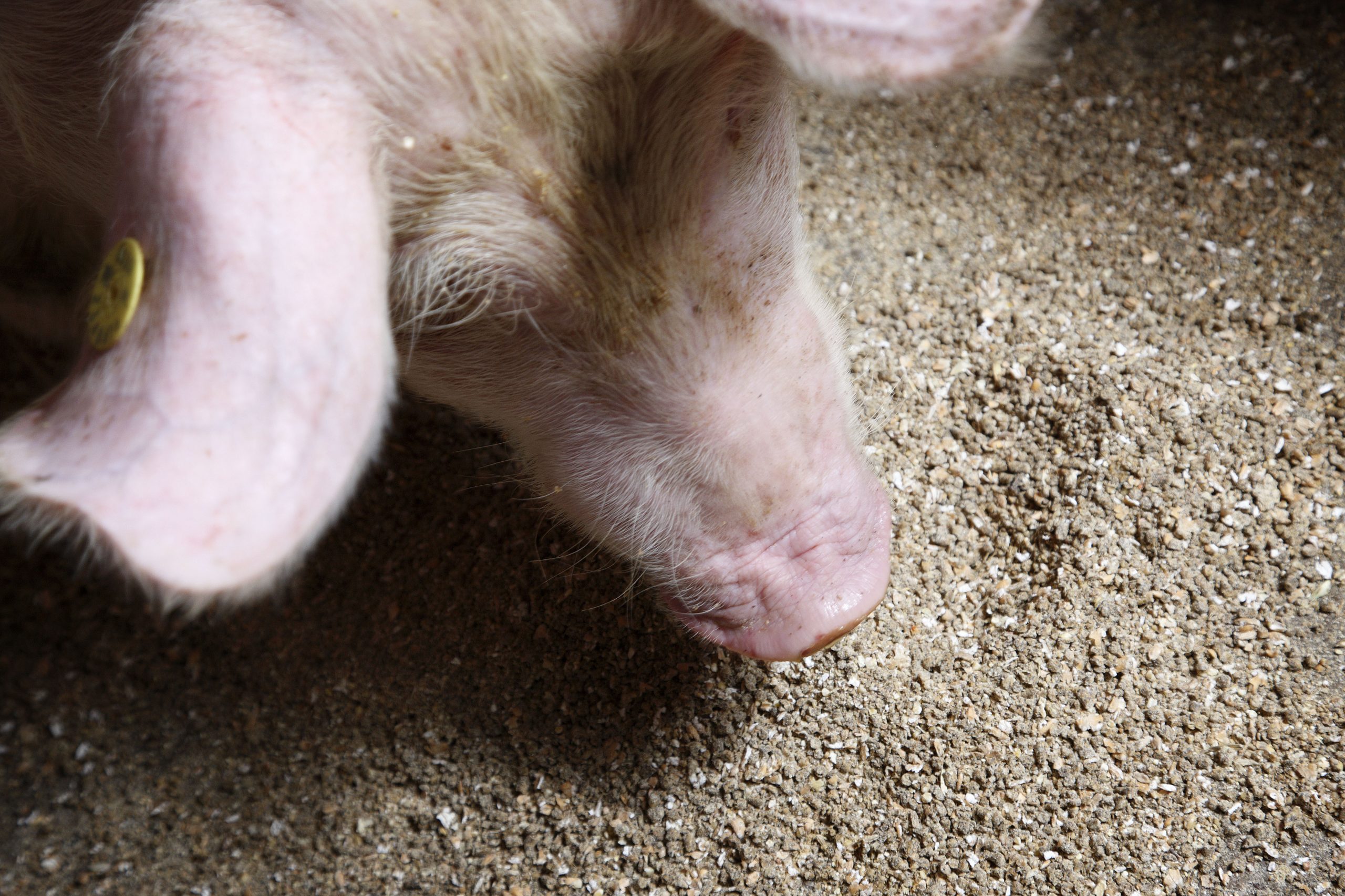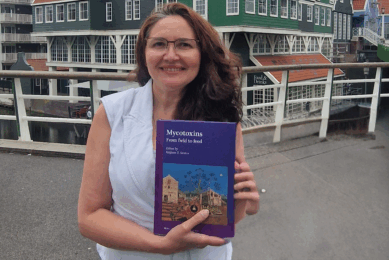Binding zearalenone, from 0 to 100%

Most feed materials are contaminated by more than one mycotoxin. Therefore, different strategies have to be combined in order to tackle each of them efficiently. In this article, we take a look at how this can be done for zearalenone.
The mycotoxin zearalenone (ZEA) is mainly produced by fungi belonging to the Fusarium species which typically grow on crops pre-harvest. After ingestion by the animal, ZEA is easily absorbed in the gastrointestinal tract (80-85%) and distributed throughout the body. Main target organ of ZEA is the reproductive system because of the similarity in chemical structure between ZEA and estradiol, a principal hormone produced by the ovaries. ZEA typically occupies estrogen receptors in the uterus, mammary glands and liver disturbing the normal hormonal processes. Symptoms due to ZEA are reproductive disorders such as embryonic death, increased number of inseminations and lower hatchability.
Binding mycotoxins
Different strategies are typically combined in an anti-mycotoxin additive to counter negative effects on animal health and performance: adsorption, detoxification and support to important organs. Although all three strategies contribute to the protection of the animal, direct action against mycotoxins by adsorption should always be employed to the maximum. After all, if we can remove most of the mycotoxins from the gastro-intestinal tract in their original form, and thus prevent absorption, we maximally reduce the risk of any negative effects. Overall, two broad categories of mycotoxin binders can be defined: inorganic binders (based on silica) and organic binders (based on carbon) (Figure 1).
Inorganic binders are divided in silicates and other materials such as charcoal. Charcoal is the most effective mycotoxin binder but its use in feed is not practical as it binds nutrients such as vitamins and minerals. Silicates are divided into two classes according to their structure. Phyllosilicates consist of a layered structure like the sheets of a book, tectosilicates have a framework structure. Within one class, minerals have similar chemical characteristics although they can differ in parameters such as cation exchange capacity, cations present, swelling capacity etc. Most used organic binders are yeasts or components thereof.
Figure 1 – Classification of mycotoxin binders (adapted from EFSA, 2009).

Efficacy of ZEA adsorption
Adsorption of mycotoxins depend on the physical and chemical characteristics of the mycotoxin binder (charge, size of pores, adsorption surface…) as well as on the mycotoxin (polarity, solubility, size, shape, etc). Overall, binding efficacy increases with increasing chemical affinities between adsorbent and mycotoxins. Besides characteristics of binder and mycotoxin, other parameters such as the environmental pH have an influence on the total binding efficiency. A wide range of scientific studies have been performed to evaluate the effectiveness of binding agents in adsorbing ZEA.
In a study comparing commercially available mycotoxin binders, De Mil et al. (2015) found that products based on yeast cell walls, sepiolite, zeolite, clinoptilolite and mica were much less effective compared to products based on montmorillonite (smectite). However, also within the class of binders based on montmorillonite (practical name = bentonite) a wide variation in binding efficacy could be found ranging from zero up to 100%. Research conducted by Fruhauf et al. (2012) on the other hand has shown higher adsorption rates of ZEA by yeast based products (up to 60%), while binding was lower for products based on standard bentonite. Previously described research perfectly shows the wide variety in binding efficacy between and within the different mycotoxin binder classes. Always keep in mind that mycotoxin binders, clays as well as (components of) yeast, are natural products and differ largely depending on the origin and the possible treatment (e.g. purification) they have been exposed to. Comparing anti-mycotoxin additives under the same experimental conditions can reveal lots of information about the true binding efficiency of products towards zearalenone.
Figure 2 – Adsorption of zearalenone by three commercial products in vitro at pH-values simulating the GIT-conditions in cattle (3000 ppb ZEA, 0.3% product).
Testing the binding efficacy
Zearalenone is one of the six mycotoxins that pose the highest risk on animal production and profitability. As most feed materials are contaminated by more than one of these mycotoxins simultaneously, it is of high importance to apply an anti-mycotoxin feed additive with broad spectrum activity. Testing binding efficacy can be easily performed via in vitro tests. As an example, an in vitro binding essay was conducted by Trilogy to compare the binding efficiency of three commercial products. Binding efficiency was determined as the adsorption percentage at pH 6 minus desorption at pH 2 and 8. In this way, the pH in the gastro-intestinal tract of cattle was simulated. The results are seen in Figure 2.












